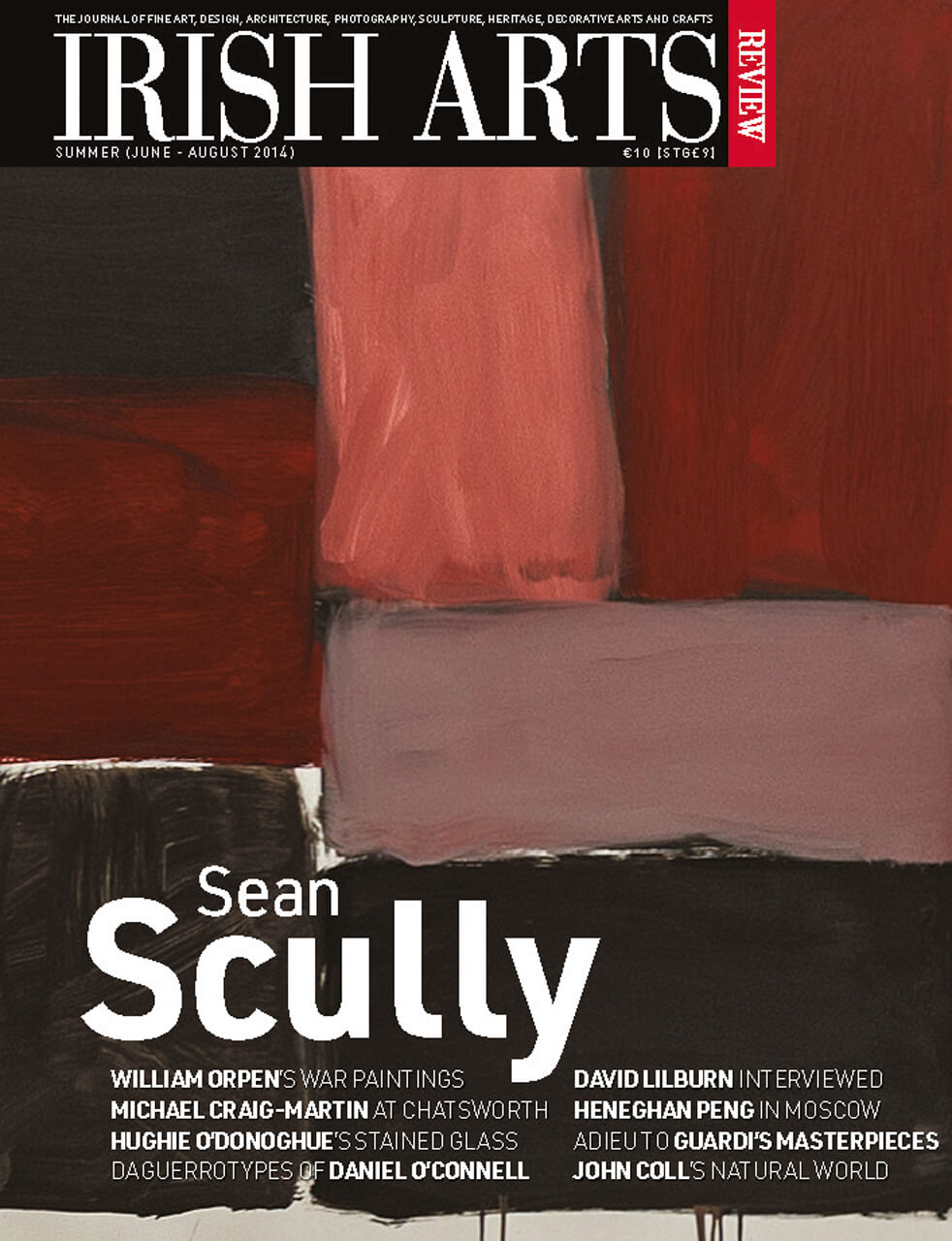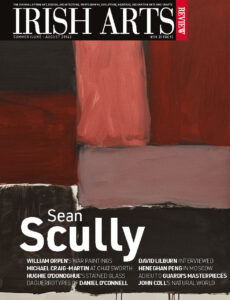

Ursula Burke, Emma Donaldson and Deirdre McKenna explore the mutable topic of time at the F E McWilliam Gallery, Banbridge. Claire Dalton looks at their responses
‘The past’ is a loaded phrase. It is never free from emotion, made acute by the fact that it can’t be changed and yet our interpretation of it is always changing.
With this reinterpretation comes the process of utilizing thoughts, memories, and events from the past as a crucial starting point from which to create a new reality. This concerns all three artists in ‘The Past is Unpredictable’ at the FE McWilliam Gallery, Banbridge. Ursula Burke, Emma Donaldson and Deirdre McKenna have exhibited in solo and group shows in Ireland and internationally, showing sculpture, painting, photography, video and installation. The trio represent the next generation of Irish female sculptors under fifty pushing the boundaries of their craft, and playing with assumptions about what their materials can say and do. In this way they are natural successors to Dorothy Cross, Alice Maher and Kathy Prendergast. The exhibition explores themes of temporality, identity and authenticity, and all three artists have taken different approaches in response to the statement ‘The Past is Unpredictable’.
Currently on a British School at Rome residency, much of Ursula Burke’s practice deals with issues of representation and identity within contemporary Ireland and she juxtaposes classical ideals with contemporary reality. She uses traditional decorative art forms to offer witty and provocative reinterpretations that go beyond what immediately meets the eye. Her work, rooted as it is in the social, political and cultural mores in Northern Ireland, with sculptures such as Balaclava Bust (Fig 1), utilizes art-historical and contemporary references which imbue them with a truly universal resonance. As Slavka Sverakova wrote of the artist, ‘In Burke’s approach it is not the tradition that dominates the present, it is the present that dominates the past.’
Burke’s series of small, framed drawings plays with various Renaissance approaches to landscape. At first glance Arcadian Landscape Sun After Jan Willem Pineman (4 November 1779) appears to be an idealized landscape, but then the eye travels to a tight figure group of rioters, dogs and police in the foreground. Their indifference to their surroundings and the dogs’ direct stares create a disconcerting sense of intrusion for the viewer.
After living and working in England for seventeen years, Belfast-born Emma Donaldson now resides near Armagh, and is a recipient of several Arts Council of Northern Ireland awards, including the ACES scheme in 2011. An experimental artist, her body of work includes photographic series, installations of light and sound and ‘drawing’ with cotton and linen.
Donaldson’s preoccupation is the immediate now, informed and coloured as it is by the experiences and emotions of the past: ‘It is my reaction to [the past] that provides the emotional material and impetus for my work; the propelling task is to dismantle the often rigid thoughts and bring them to substance.’
These sculpted works mark a considerable shift in what she has made before and are constructions of papier-m√¢ché, cardboard, wood and fabric – what she calls ‘the stuff of life’. Donaldson constructs forms which are simultaneously otherworldly and natural, relating to height and proportion of the body, and spherical shapes reoccur frequently. Layer upon layer of material (including linen, flax, wadding, felt and eggshell) representing the passing of time is reduced to emptiness at the core of Body (Fig 3). It is both dense and permeable and at 1.8 metres tall has a considerable physical presence. Donaldson’s work requires thoughtful reading, and is most rewarding when the viewer can devote time and contemplation to fully connect with the emotion at its heart.
Born in Dublin in 1973, Deirdre McKenna studied Fine Art at the RTC Sligo for three years before further study at the University of Ulster. Her primary desire is to visualize stories, and she begins with a particular memory or imagined scenario, creating something novel and unexpected while leaving room for the viewer to expand upon any meaning she has provided. She experiments constantly with new materials and feels a strong need to be free of a ‘signature’ approach to what she does.
For this exhibition, the artist thought back to the people who were at one point important in her life, but who now are just ‘Facebook friends’. She is interested by the idea of public exhibition of the individual inner life, and her preparation for this exhibition also includes an encounter with a past-life regression therapist, aiming to find an expression of the lesser-known self. The Fortress consists of an intricately modelled brass gate, its rich colour and shiny surface providing a textile contrast to the ruby red apple placed within, which decays over the course of the exhibition, inside the sanctity of the gallery space (Fig 5). This is a live experience of the passing of time and a reminder that we can’t control everything.
The three artists have approached their theme with vision and daring, showing the myriad possibilities of ‘the past’ in a contemporary setting.
The Past is Unpredictable’ F E McWilliam Gallery, Banbridge
31 May – 17 August 2014.
This article has been commissioned as part of the Guardians of the Irish Arts Review New Generation Project which aims to support and promote emerging artists, architects and writers.
Claire Dalton is co-curator at the F E McWilliam Gallery, Banbridge.



